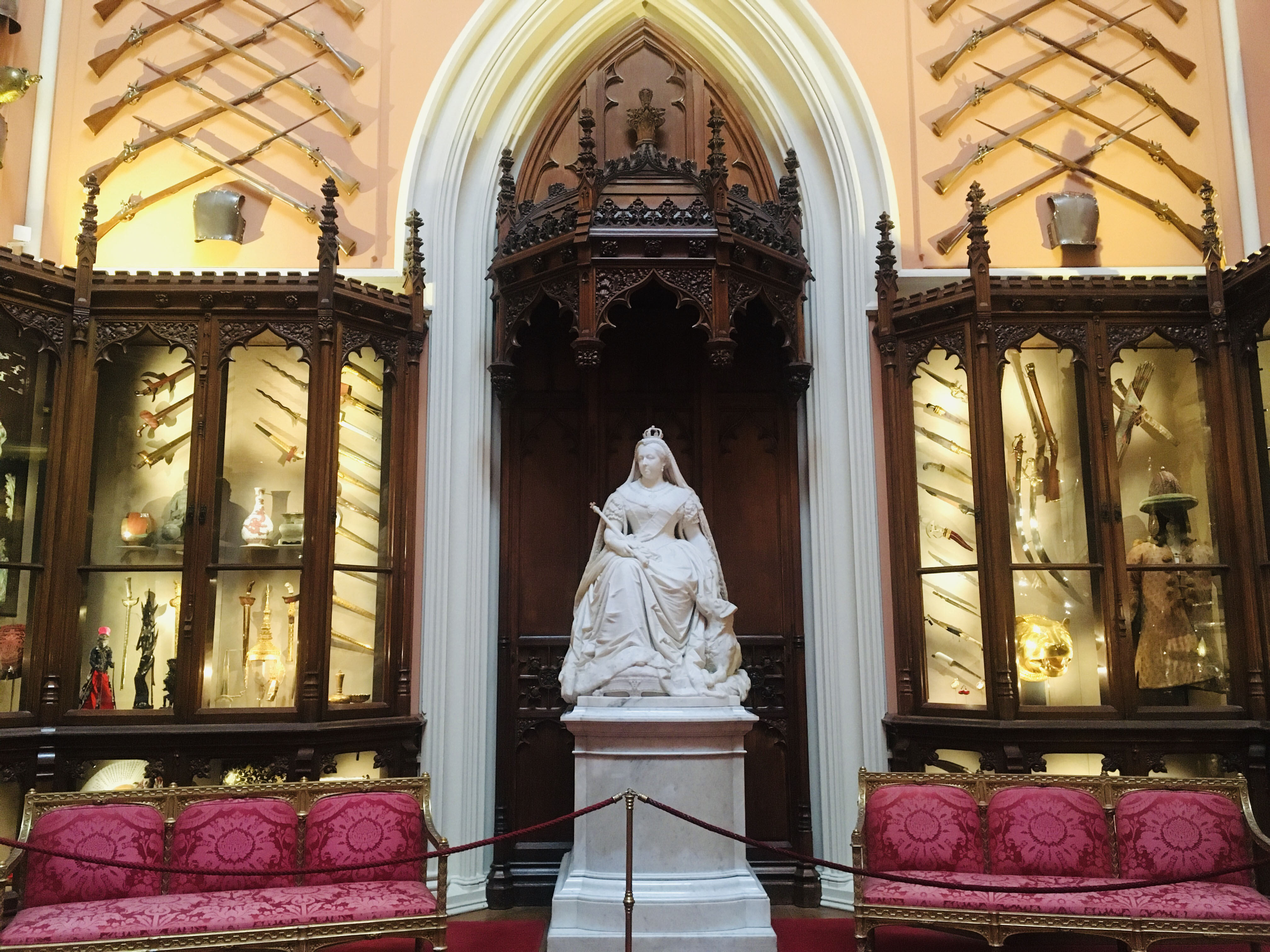
Grand Vestibule: The British Monarchy and the World
The Grand Vestibule at Windsor Castle reflects interaction between the monarchy and the wider world
ASHANTI OR SOUTH AKAN TRIBE
Trophy head
nineteenth centuryRCIN 62901
An Ashanti gold trophy head in the form of a hollow mask, with hammered facial features and pierced eyes, nostrils and mouth. Narrow strips of gold on the forehead and cheeks emulate scarification. Wirework coils, some missing, form hair curls and a beard at the base of the chin. There is a hanging hoop beneath the chin.
Masks of this kind represented defeated enemies and were attached by a hoop to ceremonial swords in the state regalia. This may explain the sustained damage to the proper left of the head, which would repeatedly have come into contact with the sword when carried. Heads of this type were made using the lost-wax technique, for which the Ashanti were renowned. The desired object was modelled in wax and then encased in clay; when dry, the clay was heated until the wax melted within melted and ran off, usually through a hole at the base. The resulting cavity was filled with molten metal and once cool, the clay exterior broken off. Producing such thin and finely worked masks such as this demanded the careful labour of the most sophisticated craftsmen.
Masks of this kind represented defeated enemies and were attached by a hoop to ceremonial swords in the state regalia. This may explain the sustained damage to the proper left of the head, which would repeatedly have come into contact with the sword when carried. Heads of this type were made using the lost-wax technique, for which the Ashanti were renowned. The desired object was modelled in wax and then encased in clay; when dry, the clay was heated until the wax melted within melted and ran off, usually through a hole at the base. The resulting cavity was filled with molten metal and once cool, the clay exterior broken off. Producing such thin and finely worked masks such as this demanded the careful labour of the most sophisticated craftsmen.







